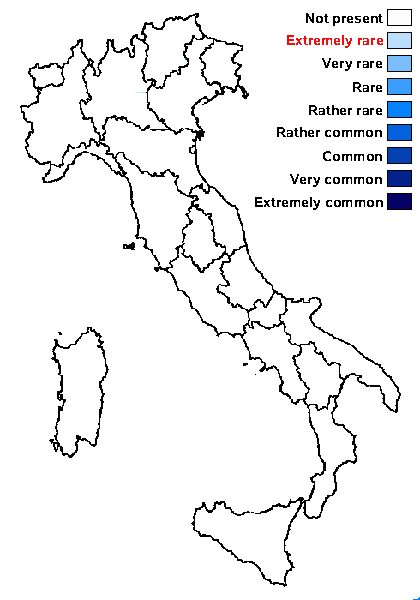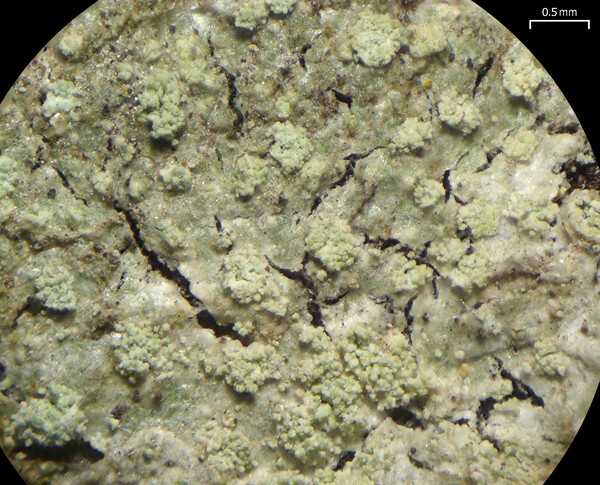Ochrolechia mahluensis Räsänen
Ann. Bot. Soc. Zool.-Bot. Fenn. Vanamo, 21: 1, 1947
Synonyms: Ochrolechia androgyna (Hoffm.) Arnold var. pergranulosa Räsänen; Ochrolechia pergranulosa (Räsänen) Verseghy
Distribution:
Description: Thallus crustose, episubstratic or endosubstratic in non-sorediate parts, usually rather thin, white-grey (sometimes with a pink tinge), yellow-grey or pale brown, continuous, smooth or folded, rimose-areolate to areolate-warted, sorediate. Areoles small and flat or large, swollen and sometimes constricted at base, dispersed or contiguous, especially in central parts of thallus. Soralia discrete, later sometimes confluent, rounded, concave to convex, whitish grey to rarely orange-grey to brown-grey, with more or less granulose soredia. Apothecia rare, lecanorine, up to 2 mm across, rounded, constricted at base, with a flat, scabrid, pale pink brown to brown disc, and a thin, even or flexuose, sometimes sorediate, finally almost excluded thalline margin. Thalline exciple corticate, with a well-differentiated medulla; proper exciple usually clearly visible also macroscopically, especially in young apothecia, forming a distinct, salmon-coloured excipular ring around the disc; epithecium pale brown, C+ red; hymenium colourless, 170-275 μm high; paraphyses thin, densely branched and anastomosing; hypothecium colourless to yellowish. Asci (4-)8-spored with thick, amyloid walls, Pertusaria-type. Ascospores 1-celled, hyaline, ellipsoid, 30-50(-60) x 17-25 µm. Photobiont chlorococcoid. Spot tests: thallus (cortex) K-, C+ red, KC+ red, P-; medulla C-, KC-. Chemistry: cortex with gyrophoric acid (major), and lecanoric acid (minor or traces).Note: usually on the acidic bark of coniferous and deciduous trees in more or less open forests; widespread in Europe, in the Central European mountains mostly in the montane and subalpine belts, in the Alps not consistently distinguished, and distribution therefore poorly known. To be looked for in Italy.
Growth form: Crustose
Substrata: bark
Photobiont: green algae other than Trentepohlia
Reproductive strategy: mainly asexual, by soredia, or soredia-like structures (e.g. blastidia)

Predictive model
Growth form: Crustose
Substrata: bark
Photobiont: green algae other than Trentepohlia
Reproductive strategy: mainly asexual, by soredia, or soredia-like structures (e.g. blastidia)

Predictive model
 Index Fungorum
Index Fungorum
 GBIF
GBIF


